Croatia Day 5 – Dubrovnik
Monday, 19-Jun-2017
Tags: Travel
Dubrovnik! We left around 7 AM for Dubrovnik, a spectacular drive along the coast. We reached the Bosnia-Herzegovina border (there is a small strip of Bosnia-Herzegovina that reaches to the coast) about an hour later, drove through for about 15 minutes, and back to Croatia, showing our passports going in and out. We drove past the Pelješac Pennisula, admiring the walls of Ston, and passing Dubrovnik to stop at an outlook a little south-east of the city, and then driving back to the walled city.
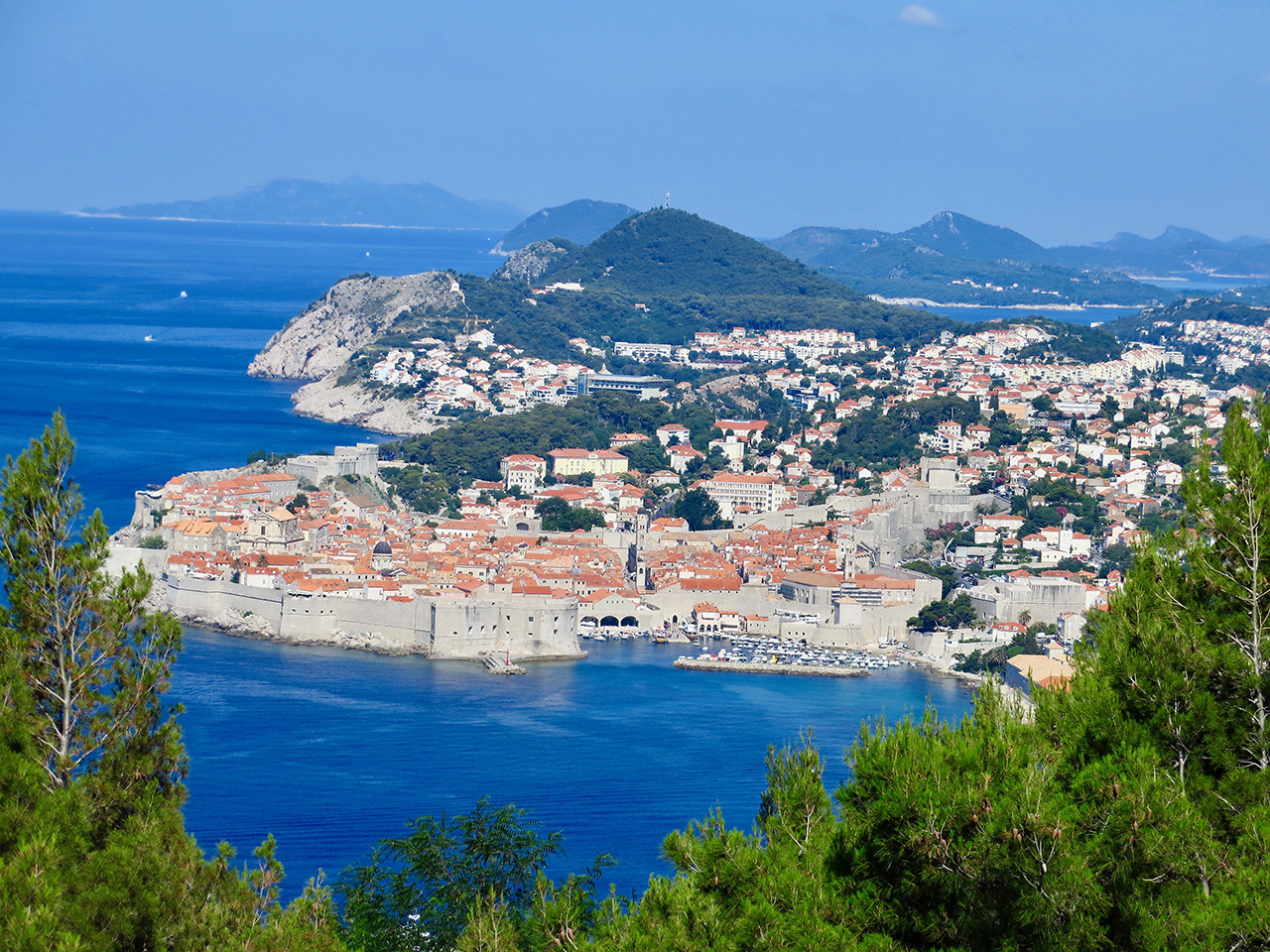
Dubrovnik was an independent republic for centuries, even when most of Croatia was ruled by various powers, buying its independence. Dubrovnik flourished in the 15th and 16th centuries, but an earthquake in 1667 destroyed many of the buildings. Most of today's buildings are post-quake Roman Baroque, though a few Gothic-Renaissance mix buildings still survive. In the Siege of Dubrovnik that started in 1991, many buildings were hit by mortar fire from the hill above Dubrovnik. There was a lot of damage, but the city survived and has been repaired, the buildings mostly all sporting new roof tiles.
We had a guide planned at 1 PM, so we had time to just walk around and visit some sights. We first stopped at the Aquarium and Maritime Museum. After a stroll through the small Aquarium, some of the group opted to go to the Maritime Museum, and we walked back to the 300-yard long Stradun promenade that runs roughly east-west through the Old Town.
View from the promenade outside the east end of the walled city.
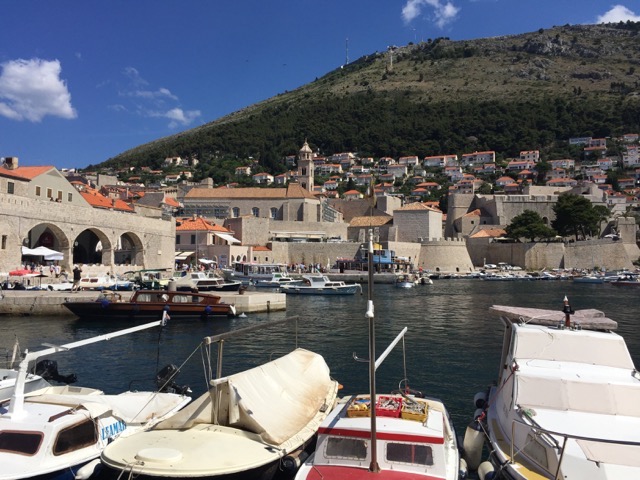
Our next stop was the Rector's Palace on the east end of the Stradun. In the Middle Ages, the republic was ruled by a short-term rector, a new person elected by the nobility each month.
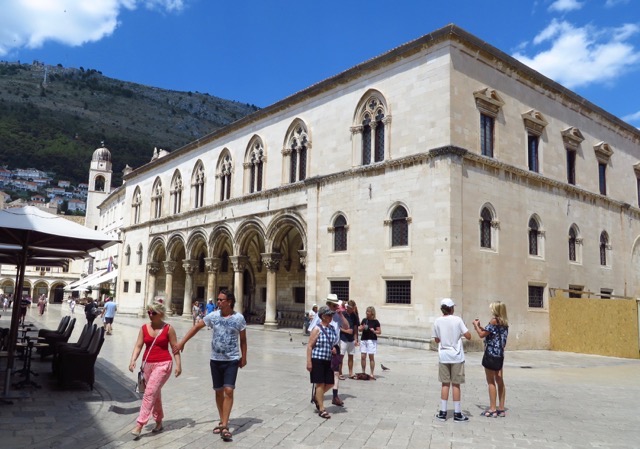
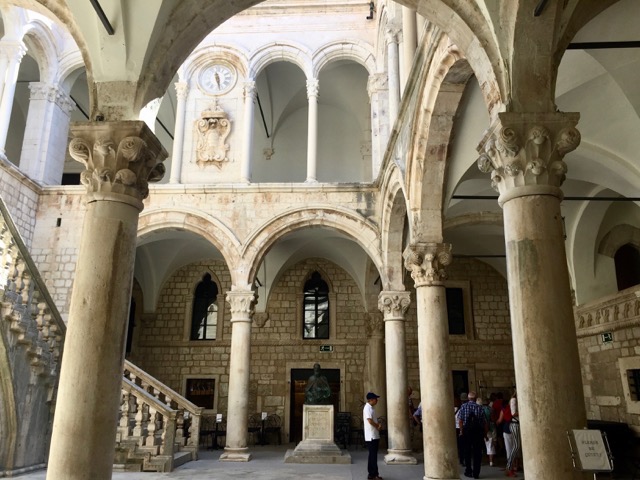
After the Rectory, we went to the the west end of the Stradun to the Franciscan Monastery, which includes a century-old operating pharmacy and a pharmacy museum. The Franciscans took care of the poor, the Dominicans, the rich.
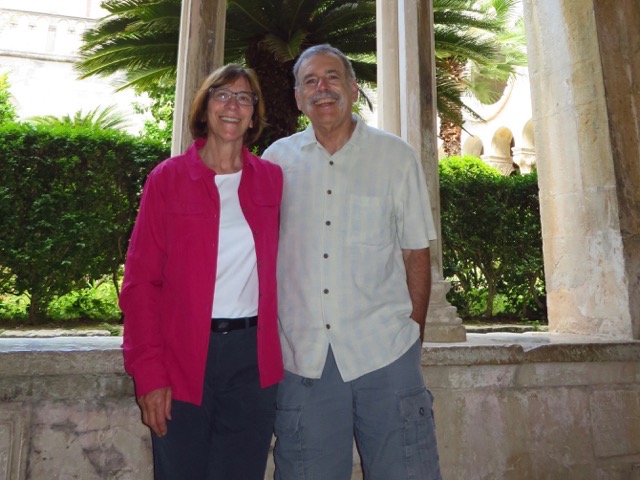
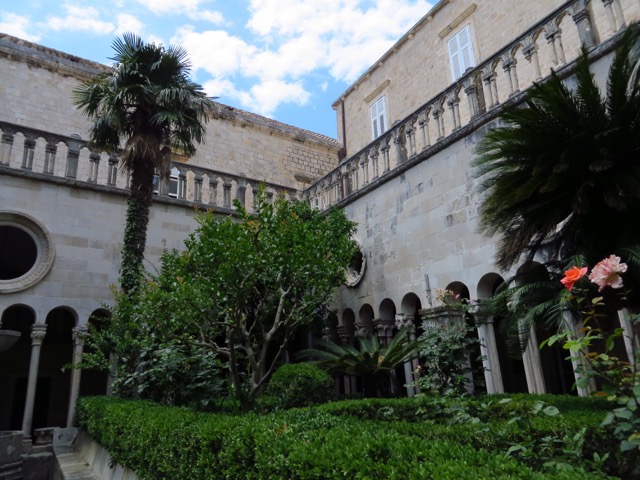
Larry really liked looking at this math book in the pharmacy museum.
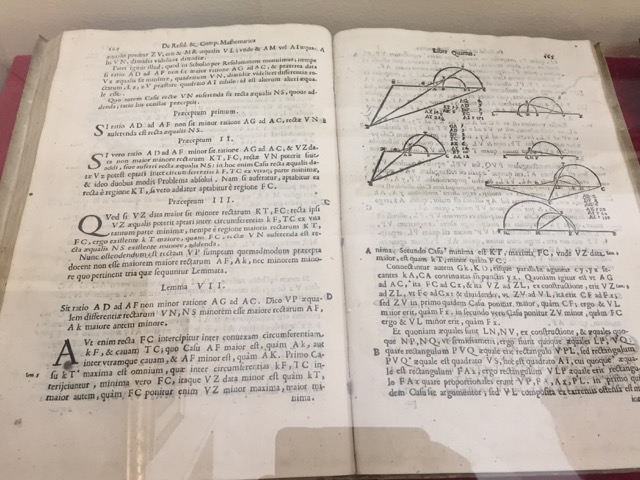
By that time it was noon and we needed to meet our guide Franco at 1, so we had an hour. Larry and I decided to head back to the east end of the Stradun and go to the Jewish Museum (first floor) and small synagogue (on the second), very small as Dubrovnik had a small population. The synagogue is the second oldest continually functioning synagogue in Europe (after Prague), built by Sephardic (Spanish) Jews. A well-worn story: fleeing from Spain, ghetto in the 1500s, liberation around 1800, World War II destruction of the small population. There is a very small Jewish population today that still uses the synagogue.
A view of the sanctuary from the women’s balcony (an improvement over the panels they originally had to look through from the side walls).
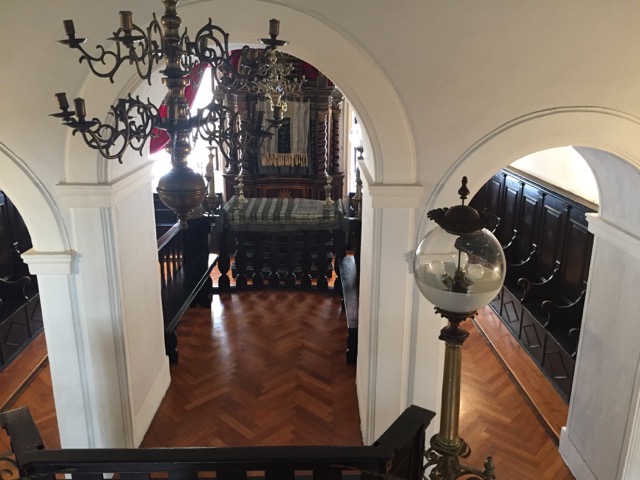
The ceiling near the ark.
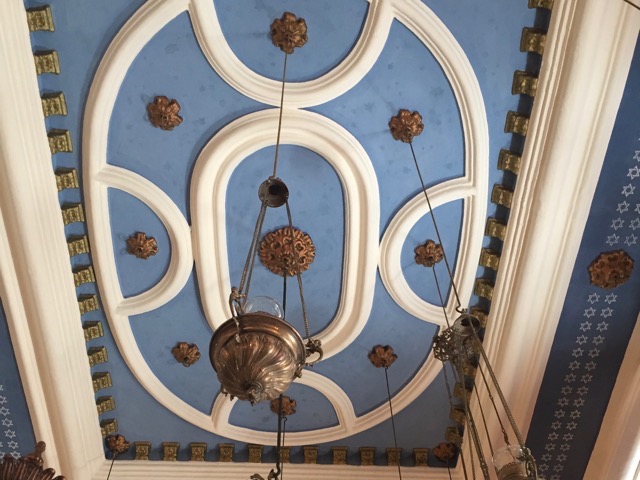
At 1 PM, we met Franco, a guide Mirena has used before, at the Pile gate (after a quick gelato). We walked along, getting a more in-depth view of the town, re-visiting the monastery and the synagogue, an alley that housed a town-run orphanage in the Middle Ages, the Jesuit and Eastern Orthodox churches, and learned a lot about Dubrovnik and the Dalmation coast.
The Stradun, looking west.
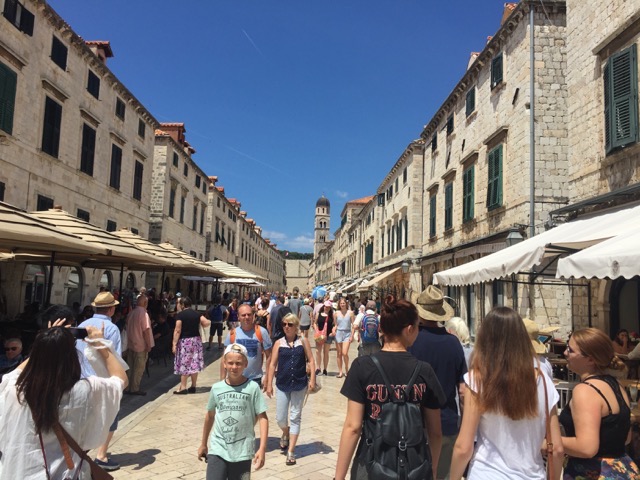
Bell Tower on the east side of the Stradun. The original City Bell Tower was built in 1444. In 1929 it was replaced by a new bell tower built according to the same design.
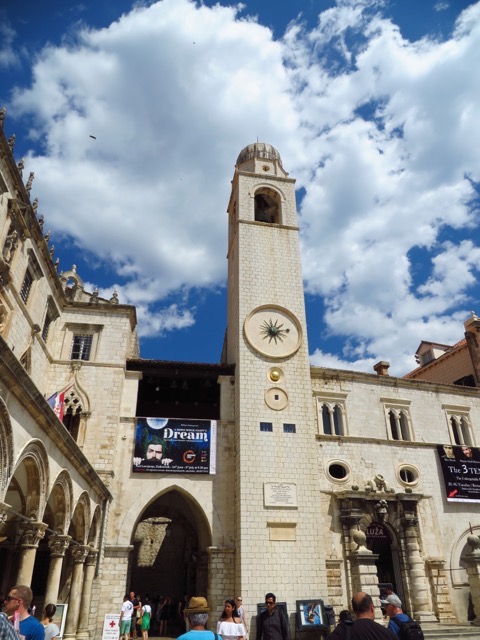
Orlando’s Column in front of the Church of St. Blaise, on the east end of the Stradun. Orlando’s Column was erected in 1417 as a symbol of a city under protection of the Hungarian-Croatian King. Public proclamations were usually made from atop of this column.
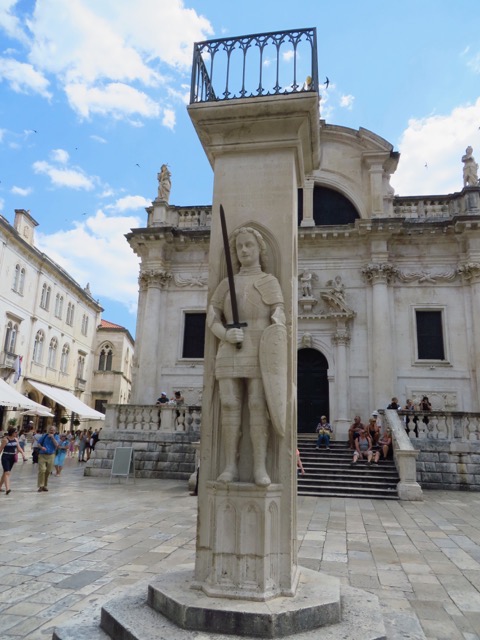
Fountain by the Pile Gate in St. Savior Square on the west end of the Stradun, dating back to the Middle Ages, with the water coming from an aqueduct system.

After that, we bought a ticket for the wall (not cheap), climbed the stairs up to the wall, and walked the wall along the north side of the city (from the east end to the west end).
Who is that in the Tilley hat and Maui Jim sunglasses :)
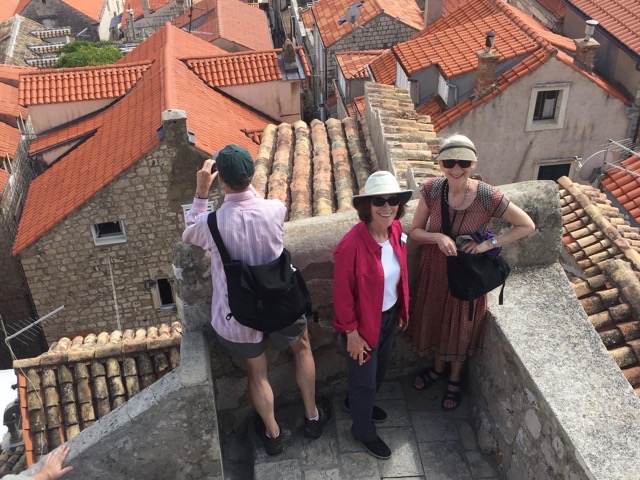
Looking down the Stradun from West to East from up on the wall.
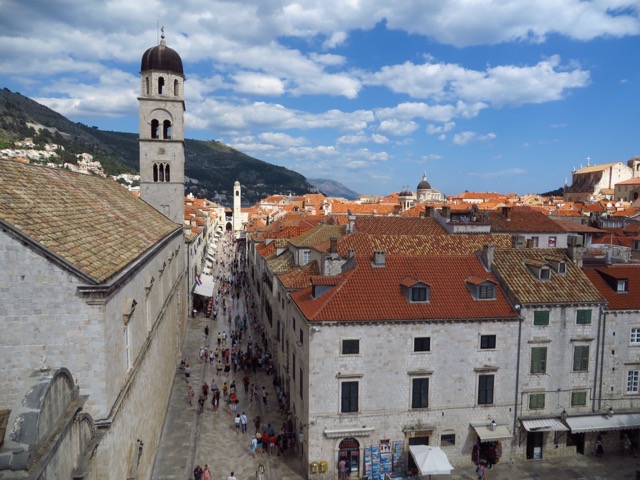
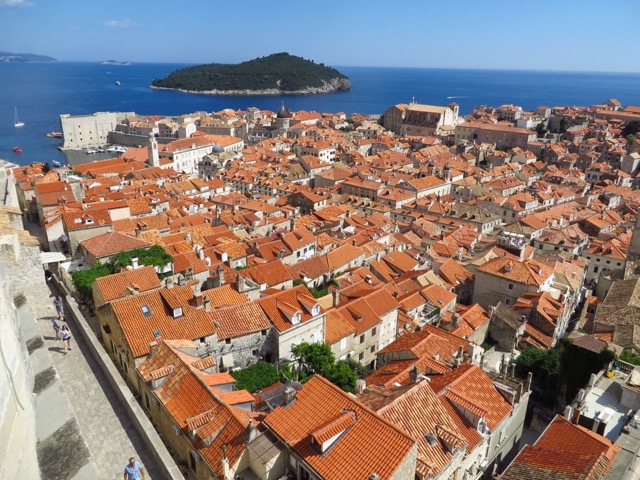
After leaving Dubrovnik, we drove to Mali Ston – Ston and Mali Ston (Small Ston) are the towns where the Pelješac peninsula meets the mainland – for an excellent seafood meal of mixed shellfish in garlic and wine and a seafood pasta at Taverna Bota Šare.
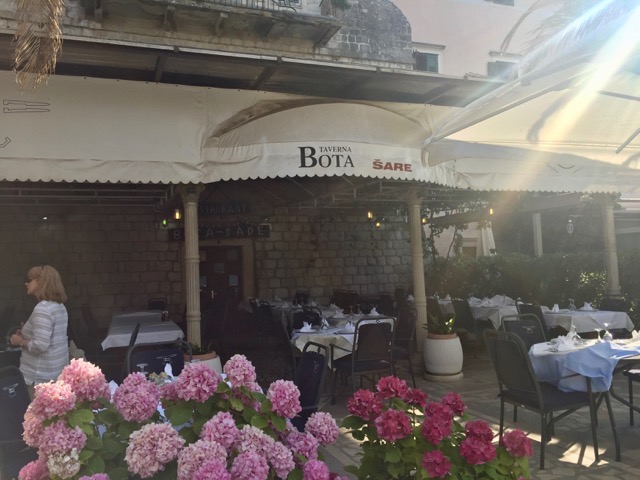
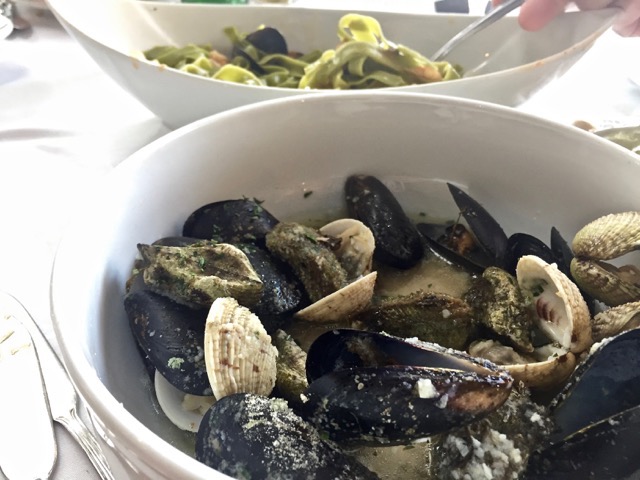
The mussels were all locally cultivated in nicely organized cages.
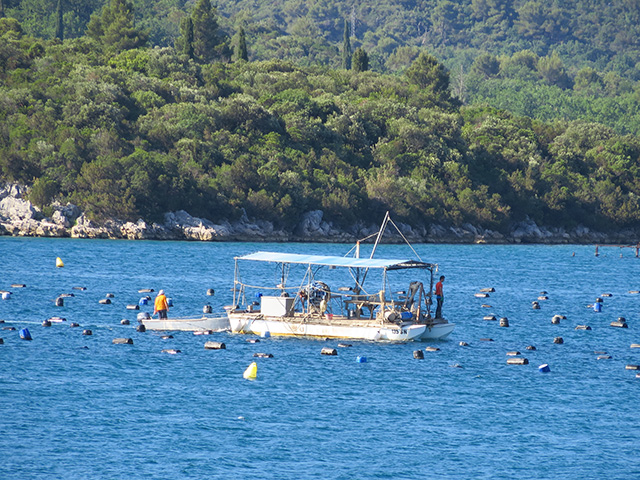
After that, home exhausted.
Links:
--
Larry and Eileen Samberg




















